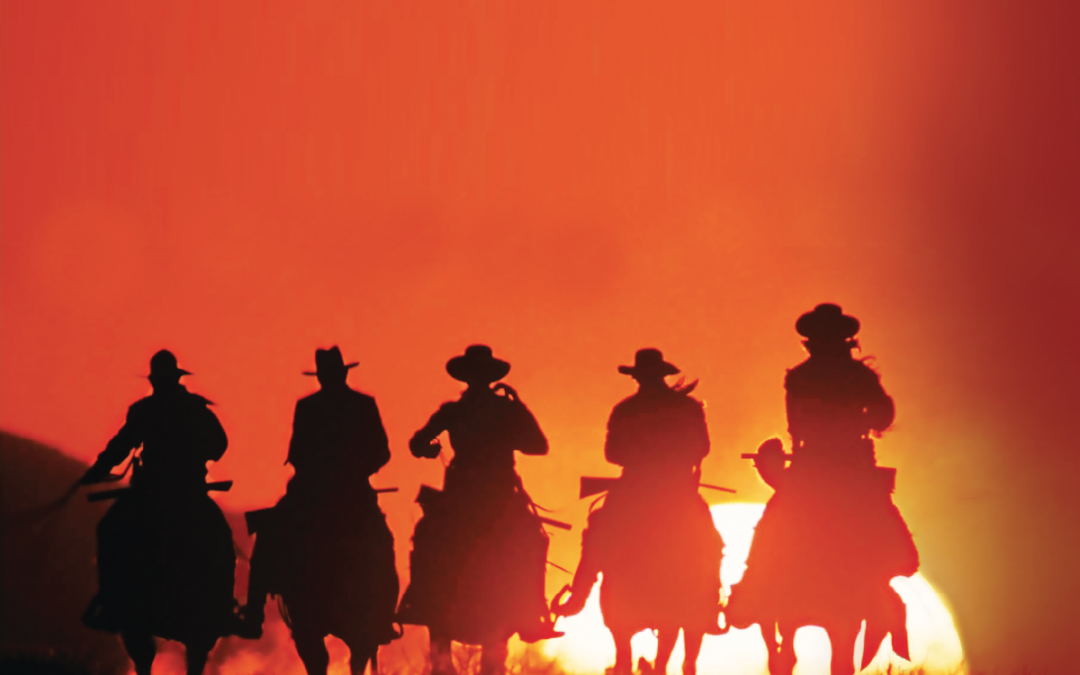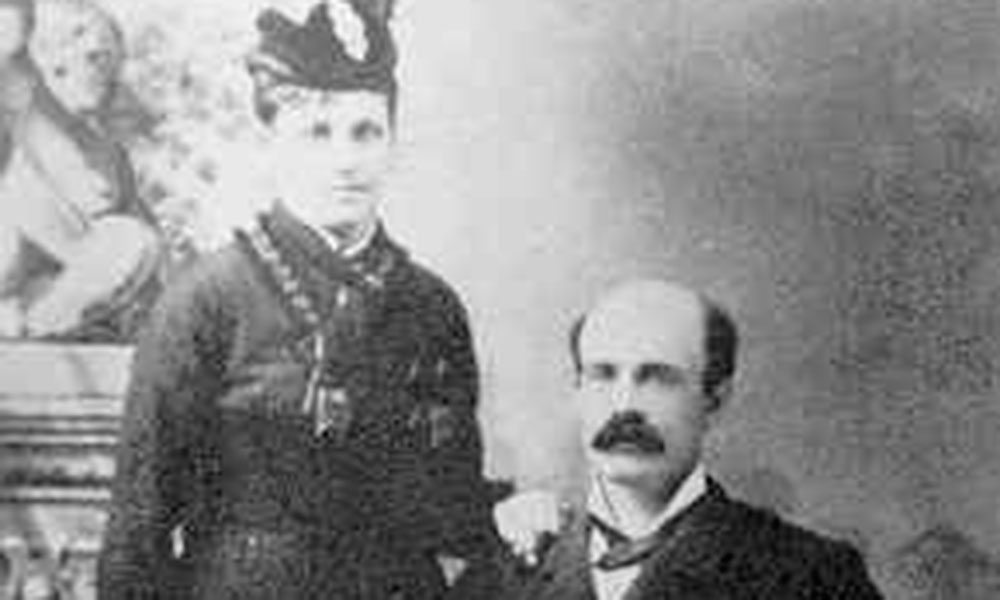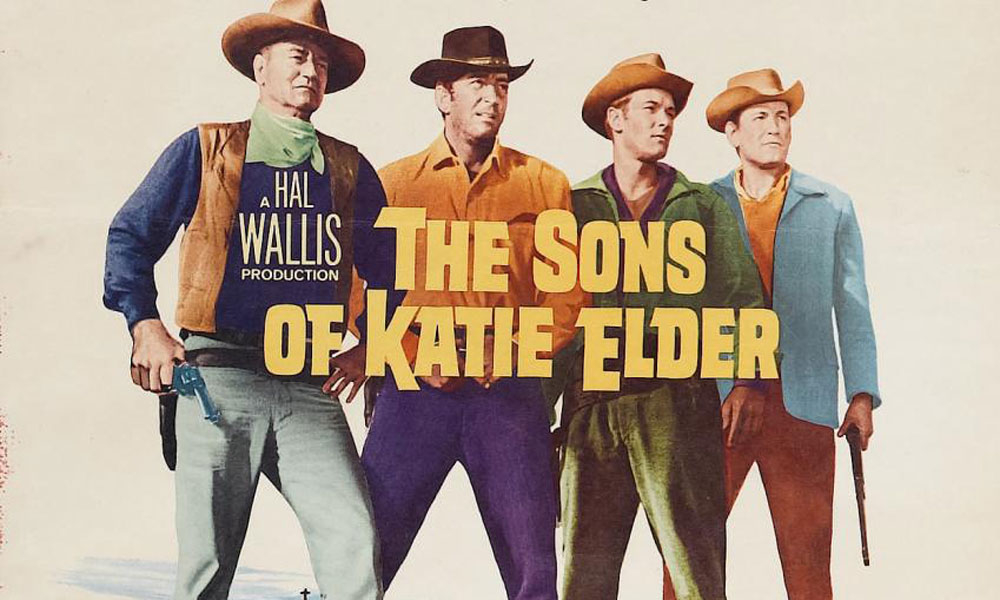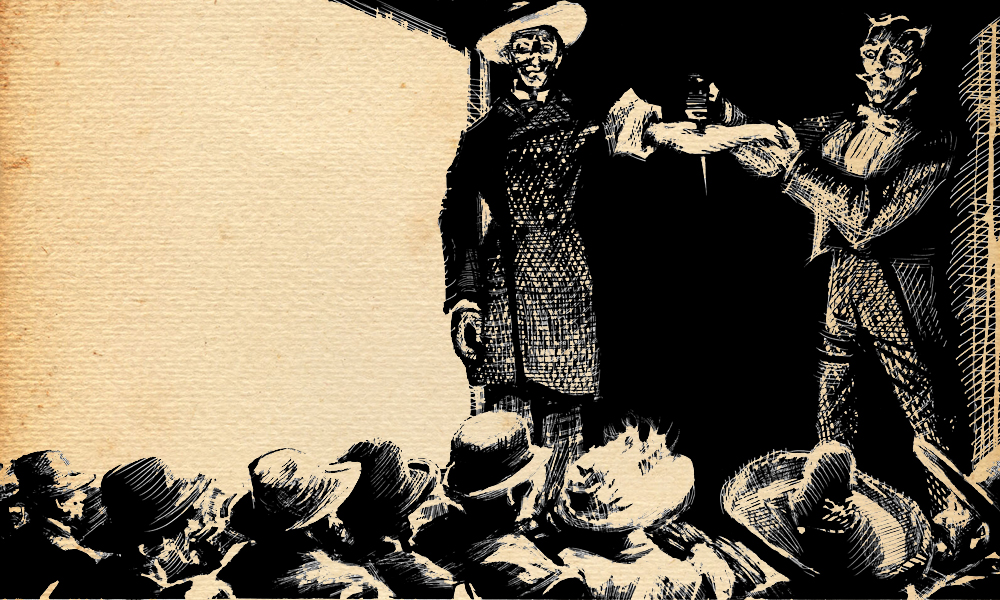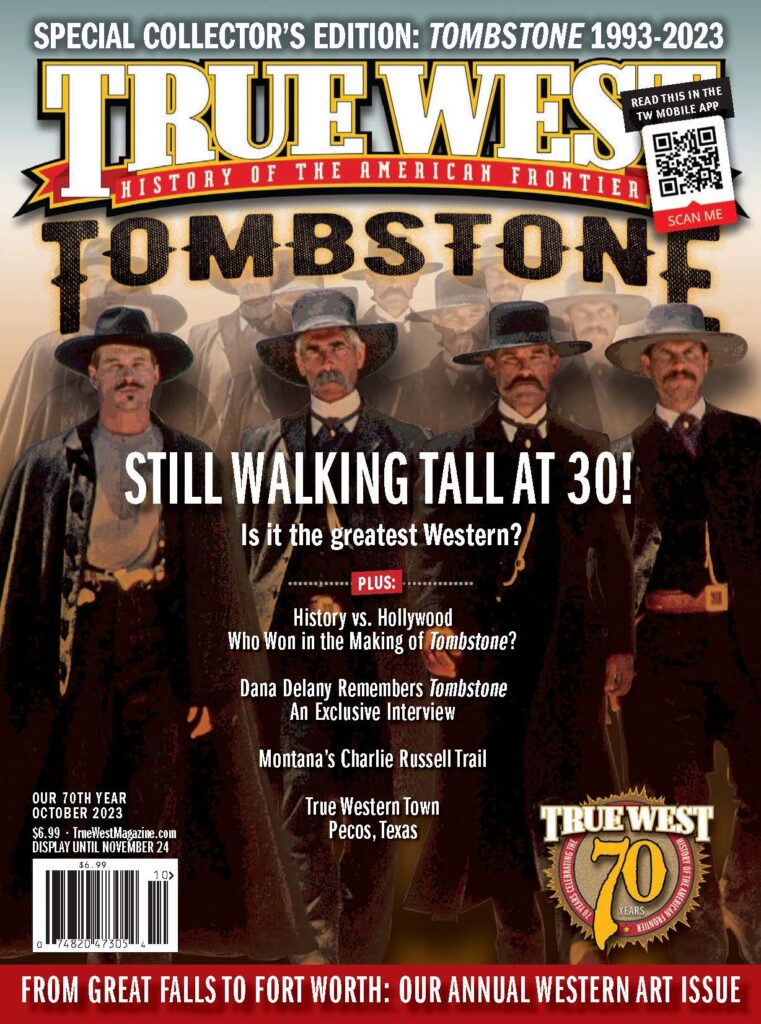Thirty years after the popular film’s release, it might be the most influential Western of all time.
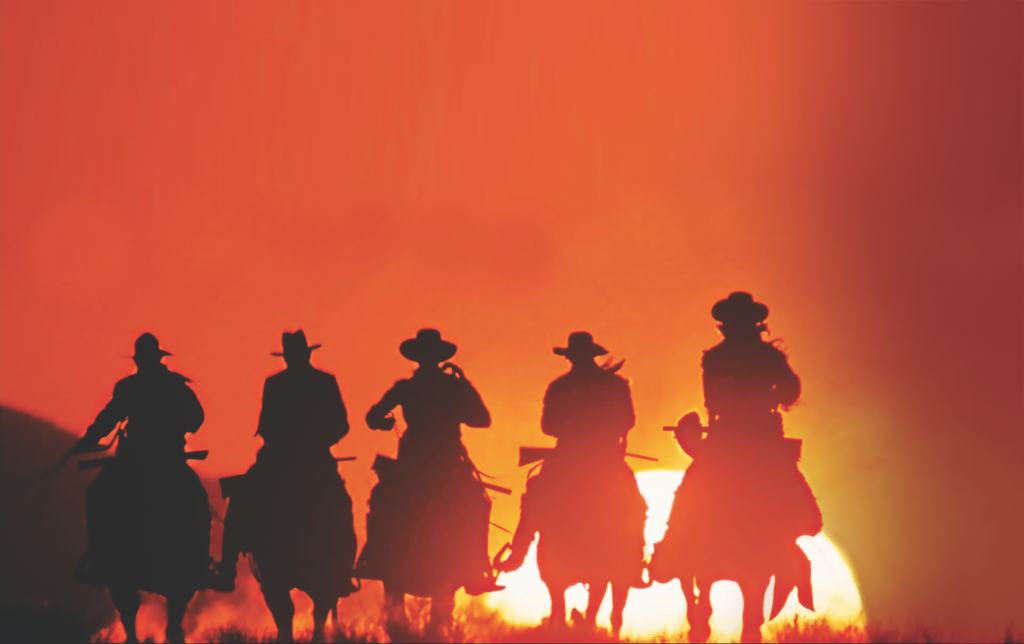
In 1993, Walt Disney’s Hollywood Pictures green-lighted the biggest Western film the conservative motion picture company had ever produced. Unforeseen by Disney’s then-boss Michael Eisner, Tombstone would become the studio’s most iconic and influential Western since the first episode of Davy Crockett aired on ABC’s Walt Disney’s Disneyland on December 15, 1954. But Eisner, who had helmed the storied entertainment company since 1985, did not sign off on the R-rated picture without a true Disney ace up his sleeve: Kurt Russell.
Russell, who was 42 at the time of the production, had made his first movie for Walt Disney in 1966 at the age of 15. Russell is not shy about his loyalty to the studio. “The Disney years were my education in the film business,” he recalled
years later.
Russell had not starred in a Disney picture since 1975 until Eisner brought him back in 1992 for the lead role in Captain Ron. Russell knew the studio was making a huge investment in him and that his career was at stake if the new Western failed. And unknown to most of the public, Russell was the reason the film was financed—and, most likely, even the reason it was ever produced. As he told True West’s Henry Cabot Beck in 2006, he’d “gone and got 25 million dollars from Andy Vajna [Cinergi Pictures] to make the movie.” (See page 40 for the full story.)
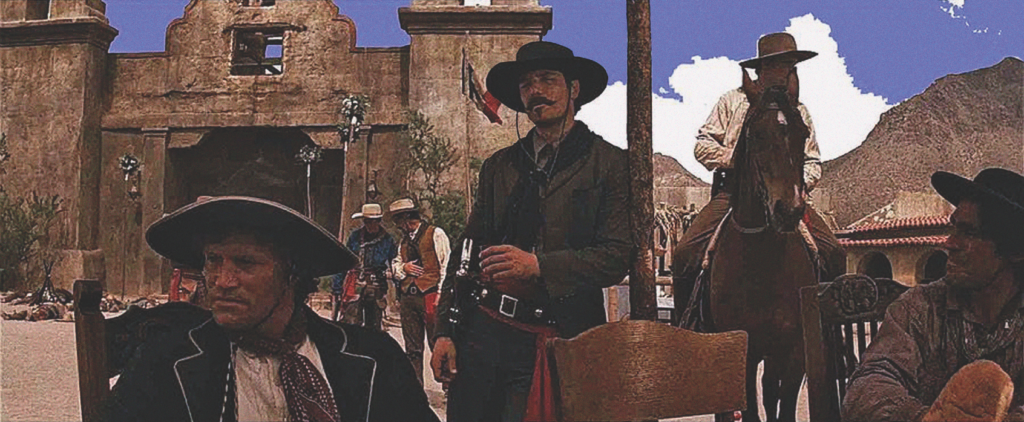
Russell had read Kevin Jarre’s original script and wanted to make it immediately. With the casting and deal in hand with Jarre to direct, Russell and the film company went to work on location in Tucson, Arizona, in May of 1993. But that is when Jarre’s inability to direct the large-ensemble cast—and stay on time and on budget—was questioned.
Soon thereafter, the studio executives handed the reins to Russell to recruit a replacement director—George P. Cosmatos—and bring the picture in on time and on budget.
And Russell did.
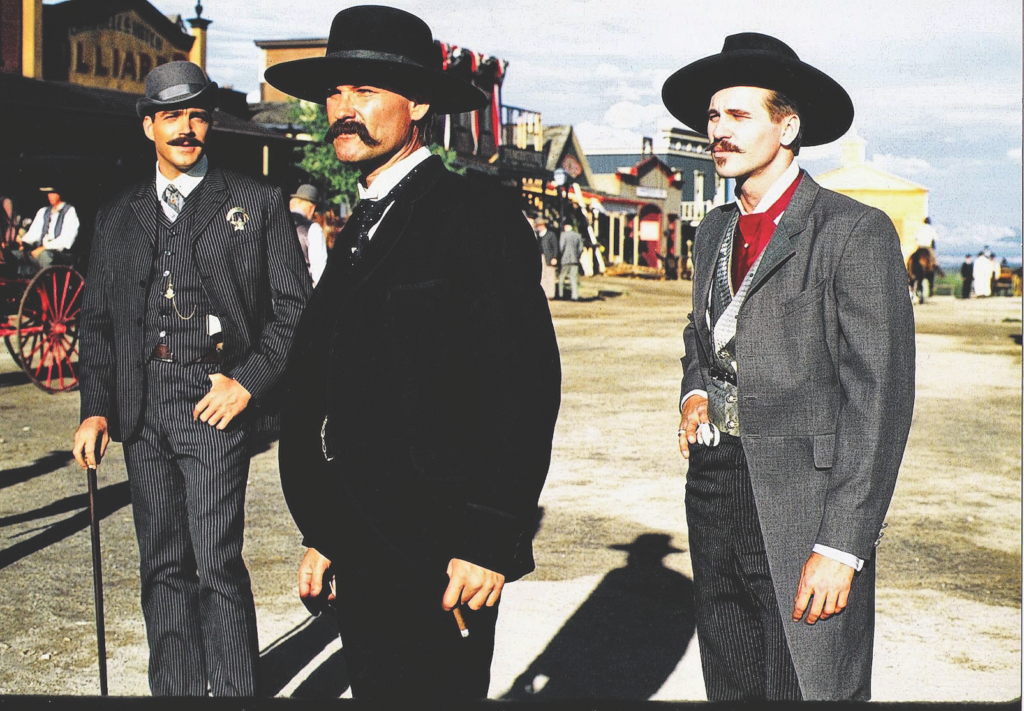
Thirty years later, Russell’s knowledge of entertaining and filmmaking can still be seen across every frame of Tombstone. Also evident is his love and respect for the Western genre—the genre to which he and his father, Bing Russell, owed so much of their careers.
No other Hollywood film has had as much influence on Old West popular culture, literature, frontier law-and-order scholarship and tourism. One of the main reasons why is that the movie is based on real people and historical events that have sparked debate and controversy among historians, authors and fans for nearly a century. The second reason why is Kevin Jarre’s meticulously researched script, which has taken on mythic status itself.
In honor of Tombstone’s influence, we decided that it was time for a reckoning—to pause and have a good conversation with our contributors about the film, its historical characters and what we have learned about them since 1993—and ultimately—why it all matters. And, like any family, our True West family doesn’t necessarily agree on everything about the legacy of Tombstone. But isn’t that why we love Old West history so much?
“Isn’t that a daisy?”
Tombstone was released in December 1993. Six months later, Kevin Costner’s Wyatt Earp was released as well, but the biopic Western never gained the traction or fan following of its old-fashioned ensemble-style competitor. Both of the big-budget films tipped their respective hats to Westerns that had had recent box-office and critical success: Young Guns I and II, Quigley Down Under, Dances with Wolves and Unforgiven, the latter two recipients of the Oscar for Best Picture. Since then, film historians and writers have debated the importance and cultural influence of these films in the pantheon of Western films.
But, again and again, one film rises to the top of the conversation, Tombstone. So, we decided to put the question to our experts.
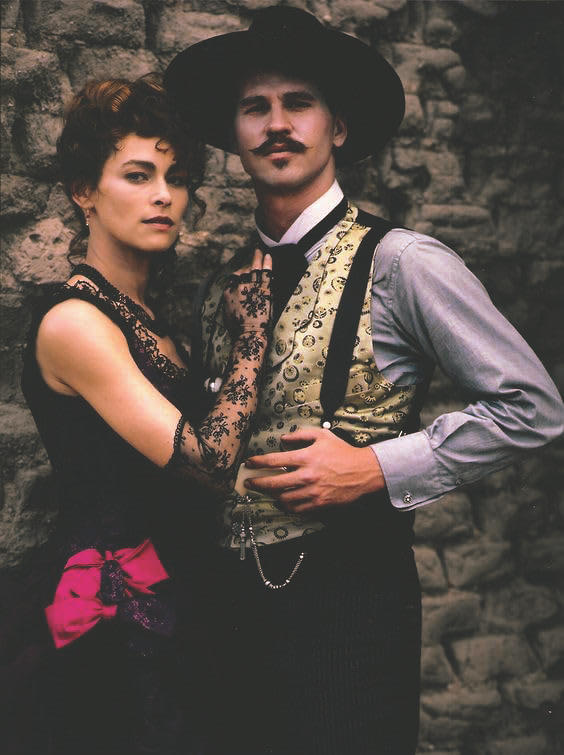
Is Tombstone the greatest Western, and should Tombstone be considered as significant to the popularity of Western history and culture as Lonesome Dove, Dances with Wolves, Yellowstone and Walt Disney’s Davy Crockett?
“Tombstone is to Davy Crockett as the Korean War is to World War II—no comparison. Tombstone is something of a cult movie (like Blade Runner in sci-fi) with quite a following, but Disney’s Crockett was a cultural phenom that rocked the nation (and the world).” —Paul Andrew Hutton, historian
“Of course. Well, I might be a bit prejudiced as I produced it, but…heck, yes! Although High Noon, Magnificent 7 and a few others (Unforgiven, Shane, et al) are almost as good.” —Bob Misiorowski, Tombstone producer
“The reverence for this film in certain quarters continues to remain a source of bafflement to me.” —Kirk Ellis, screenwriter, author, producer
“I would place it among the greatest Westerns. However, it would be hard to identify which is the best. High Noon, Shane and Stagecoach are among other greats that would have to be considered.” —Casey Tefertiller, historian
“Although Tombstone has a huge and devoted following, it rarely makes the top of the great Western film lists. Tombstone is a story set in the West rather than a story about the West. Transfer all the plot points to gangland Chicago in the 1930s (the film’s opening monologue compares it to modern-day New York or Los Angeles), and you would still have a good story.” —Victoria Wilcox, author
“I’m not sure there is a single greatest Western. There are a number of films that qualify as among the greatest Westerns—Butch Cassidy and the Sundance Kid, The Searchers, True Grit (both), Jeremiah Johnson, My Darling Clementine, The Man Who Shot Liberty Valance, and Tombstone certainly ranks among them.” —Max McCoy, author
“Tombstone is the greatest Western of the second half of the 20th century, hands-down. The Man Who Shot Liberty Valance garners that appellation for the first half of the 20th century. Tombstone is based on real people, real locations, real events. While it was made to be entertaining, it also includes many actual events involving real people, portrayed by actors in a most convincing manner; historical fiction that hits the mark for accuracy.” —Roy Young, historian
“No. I loved it, but now I turn it off after the O.K. Corral gunfight. I can’t watch the vendetta ride where Earp kills over 375 bad guys…stupid. Loved the costumes and dialogue and an excellent rendition of the gunfight, but it is far from being the #1 Western.” —Thom Ross, artist
“I would say Tombstone is the greatest Western made in modern times. It may not be the best of all time, but nothing recently seems to top it. Why? Several reasons, including the historical accuracy, the authenticity of the set, costuming and all else, but most importantly the dramatic story that was executed so well by the actors’ ability. The dialogue was unusually original without being superfluous; the screenplay was tops.” —Kurt House, historian
“No. I believe The Searchers is the number one greatest Western. It’s a timeless, tragic tale revealing the conflicting darkness and light in humanity set against the magnificent backdrop of the American Southwest. To be truly a classic, a Western must show the grandeur of the West, and The Searchers does just that.” —Bill Markley, historian
“It was a great hit, but a great movie? Not even close. It’s not even the best movie about the O.K. Corral. That honor goes to John Ford’s My Darling Clementine, which doesn’t get one fact right but, as a movie, is cinematic poetry.” —Johnny D. Boggs, historian, author
“Tombstone definitely belongs right up there among Hollywood’s great Westerns. I don’t mind movies that get it wrong because at least the story of the West is out there for people to see, and one hopes it arouses their curiosity to seek the truth.” —Marshall Trimble, historian
“Yes, Tombstone is the greatest Western movie ever made. I can’t think of another Western as influential. It may not be great as acting or theater, but it spoke to people’s spirit. There are better dramas, and John Wayne taught us how to be men. Kurt and Val taught us about being our better selves.” —Doug Hocking, historian
“I always say that if you do not watch the violent, overwrought beginning and end of Tombstone, in between is probably the finest Western ever filmed. The costumes, sets, language, detail and drama are beyond outstanding.” —John Boessenecker, historian
“Fight’s commenced! Get to fightin’ or get away.” —Wyatt Earp
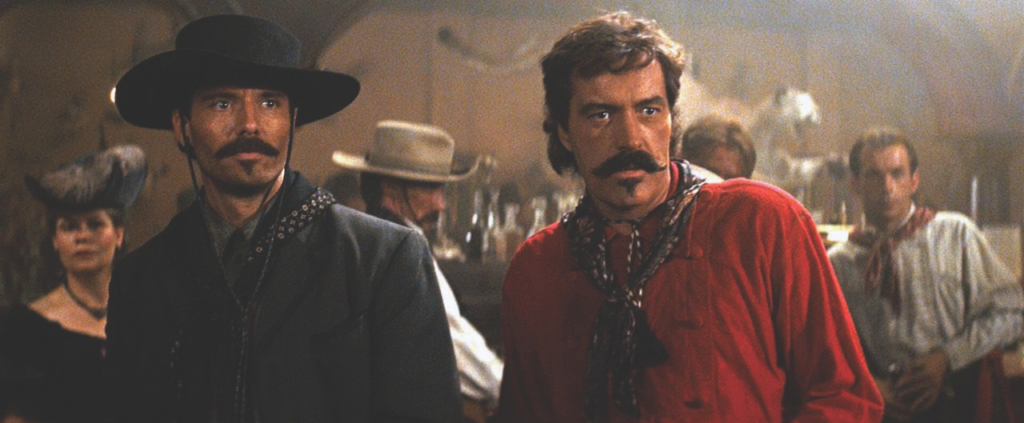
“That is a hell of a thing for you to say to me.”
In 1993, two reasons that Tombstone went into production in Arizona were Kevin Jarre’s script and Kurt Russell’s desire to make the film as accurate as a Western film could be, while remaining entertaining. The film’s producers, screenwriter and principal actors all had a passion for the genre—and it was brought to bear in all the film’s departments. From locations to costuming, the film sets to tack, props and rolling stock, the film’s crew put all of their efforts into making the film as accurate as possible. Did they get it all right? No, but they weren’t making a documentary either.
The efforts paid off. Popular audiences were entertained, critics praised it and Western historians—for the most part—appreciated it. Was it the greatest Western? That question will never be answered, but in our humble opinion at True West, it may be the most influential—at least in the past 30 years—especially for the town of Tombstone—and Earp, Holliday and Tombstone scholars and novelists.
But don’t take our word for it. We’ve asked our experts to weigh in.
Did Tombstone propel/sustain the popularity of the Old West forward, including the popularity of Tombstone as a tourist destination since 1993?
“Yes, Tombstone town and movie live on. I first saw a dying Tombstone town in 1988, and I’ve watched it come to life since 1993.” —Doug Hocking
“Tombstone’s popularity in today’s culture is probably its most important contribution to the Western.” —Bunker DeFrance, cohost of Voices of the West
“Oh, hell, yes! It was not only a boon for tourism in the town, but for Old West reenactors, replica guns and clothing. It also spurred a great interest in the Wyatt Earp saga.” —Michael F. Blake, historian
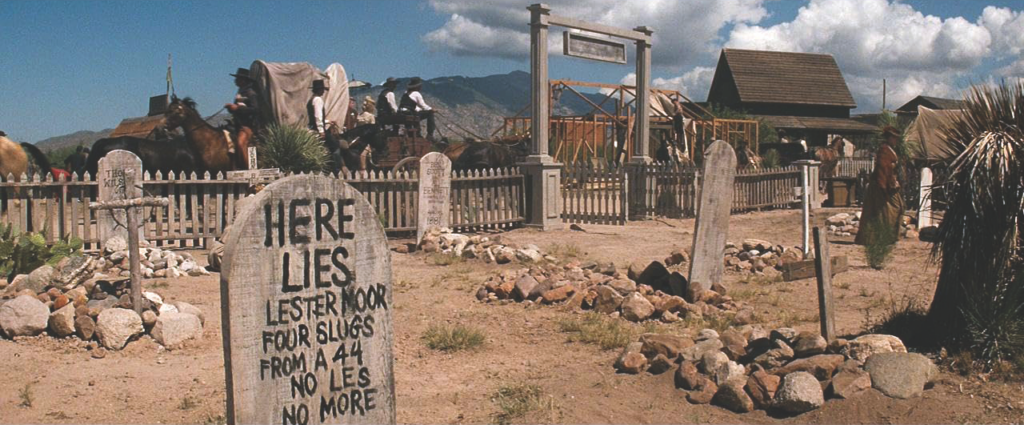
Although Tombstone is entertainment in its purest form, what aspects of it are correct historically?
“The costuming and attention to detail were excellent. There are times when you can almost feel the Arizona heat yourself with all those beads of sweat on screen. There are some wonderfully accurate titbits in there, and the portrayal of the Earps-Cowboys feud is solid enough, considering it is an artistic impression of events.” —James B. Mills, historian
“Tombstone took the sepia-toned Western films that came before and dumped them on their heads. For the first time we had bright and flamboyant clothing, newly painted buildings, accurate language, guns and clothing. Plus, the film was shot in the same area as the events portrayed.” —Erik Wright, historian
“The physical setting of Tombstone and most of the extras were reenactors rather than extras. The All-Star supporting cast was excellent. Their clothing was accurate. Hollywood is much better at getting it right when using reenactors instead of extras who don’t know which end of a cow gets up first.” —Marshall Trimble
What historical details in the film would you change if given the chance?
“I wouldn’t change a thing about the film, even to make it more historically accurate.” —Max McCoy
“I would get rid of the the first five-minute bloodbath and the last 15-minute bloodbath. Those events never happened, and the Tombstone saga is so exciting it did not need such exaggeration.” —John Boessenecker
“I could write a lengthy discourse on things that are wrong with the movie, but the key flaw is the departure from Kevin Jarre’s script. Whatever Jarre’s failings as a director, his original script told a better story.” —Gary Roberts, historian
“Kevin Jarre’s script was a character study of the relationship between Wyatt and Doc; George Cosmatos eliminated much of the interplay and development of the supporting characters and turned the film into an action flick.” —John Farkis, historian
“Not sure I would change anything, given that the movie is entertainment. Don’t think viewers really care about the history.” —Harry Alexander, cohost of Voices of the West
“If I could change one aspect of the film historically, I’d change the opening scene with the Cowboys at the wedding. That was just awful.” —Linda Wommack, historian
“Today’s Tombstone is a product of Tombstone. I tell people, if you go to Tombstone, don’t expect to find a historical place, but one that reflects the movie. If you can go there embracing that, you’ll have a great time. If not, it’ll be a bitter disappointment.” —Brad Courtney, historian
“I think [the movie] helped—in fact, having grown up in New Jersey— I didn’t even know Tombstone existed until after the movie came out.” —Sherry Monahan, historian
“I’m sure it’s not historically accurate, as no writer was there recording conversations, etc. All we can do when relating historical events fictionally is say this is what he would have said and done, or so I believe. And every writer would write it differently.” —Larry J. Martin, author and co-founder of Wolfpack Publishing
“Well, the scene that seems to get the most criticism from historians is the opening church act. Any purist will immediately tell you that that never happened, but if you think about it, in a way, it really did. In the early 1880s the Cowboys brutally ambushed a group of Mexican smugglers coming across the border into the United States. I feel the movie is trying to depict that incident. Also, I think the scene was necessary, as right from the very beginning, from this depiction, we all learn who the “bad guys” really were. And were they bad! For the sake of the rest of the movie, the lines have now been drawn.” —David de Haas, historian
“There’s no normal life, Wyatt. There’s just life. Now get on with it.” —Doc Holliday
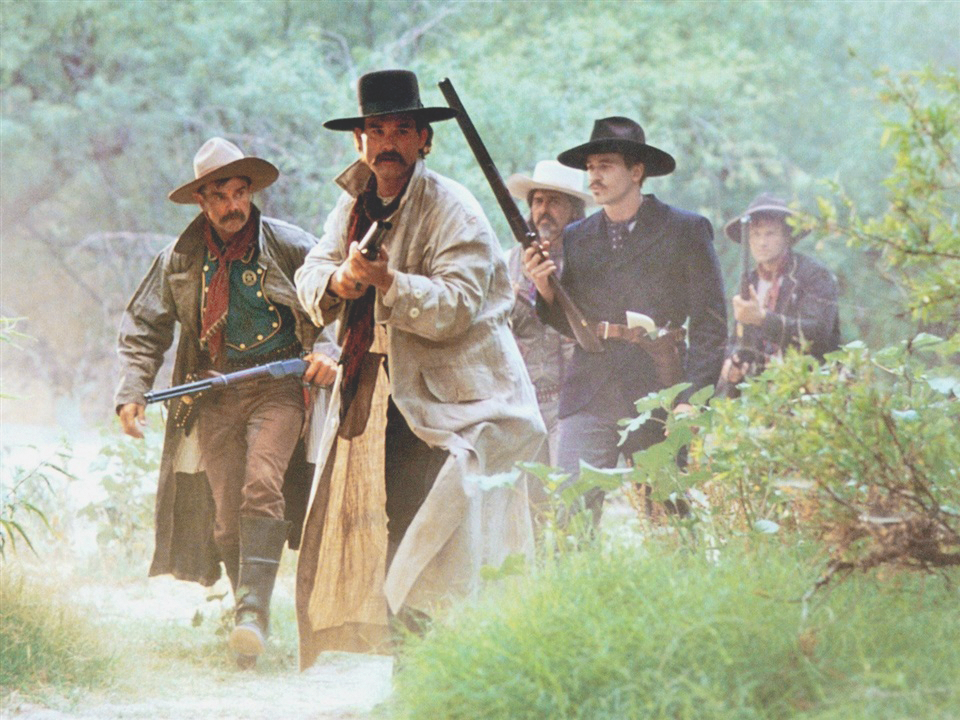
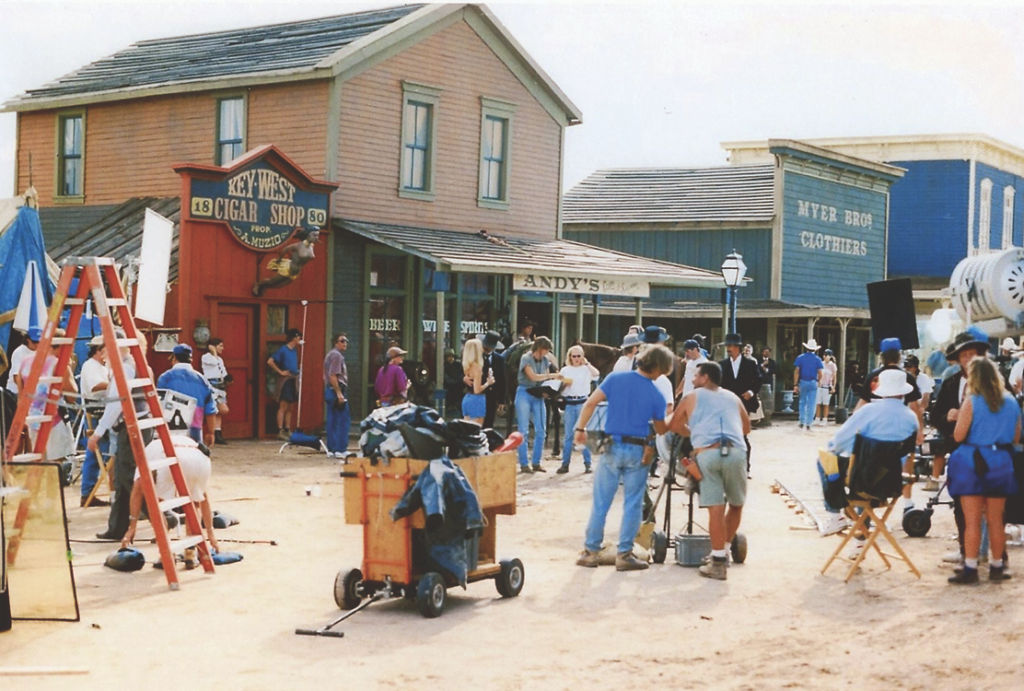
“I’m your huckleberry.”
At the heart of Tombstone is a classic, Shakespearean in style, feud, the Cowboys versus the Earps. Screenwriter Kevin Jarre did not have to stray too far from the truth to create an entertaining screenplay with more than a nod to history and the greatest Greek and Roman dramatists.
Unlike the ancient myths and legends of the Old World, the mythic lore of 1880s Tombstone, Arizona, is less than 150 years old. But, like a famous sage once said, “Life imitates art more often than not.” And, when it comes to real history, very few years in the Old West are as imitated as the time of the Cowboys vs. the Earps between 1879 and 1882.
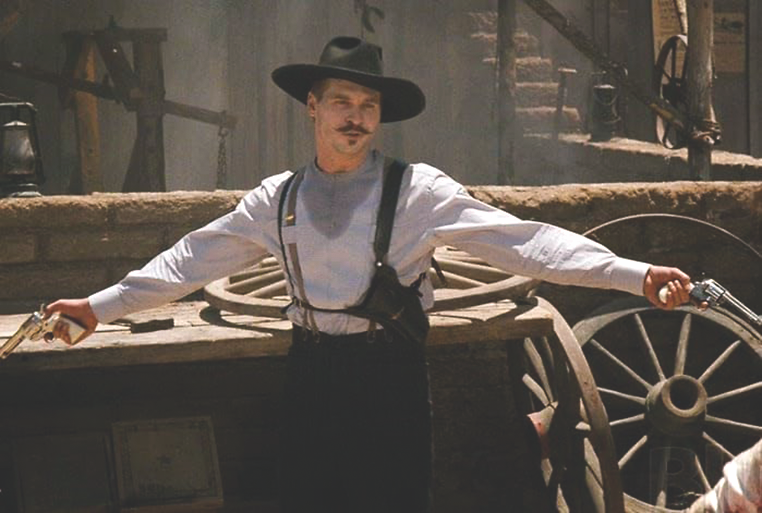
Many critics and film historians laud Tombstone for its attempt at historical accuracy. Rightly so, screenwriter Jarre is given a great deal of the credit. He recognized the classic drama at the heart of the legendary events and the historical characters that William Shakespeare would have relished to dramatize in an ensemble for the ages.
Kurt Russell also recognized the magic of the ageless drama in Jarre’s script, especially in the well-known characters—the Earps, Doc Holliday and the Cowboys—and the famous gunfight at the O.K. Corral. The unique amalgamation of myth, history and legendary characters was perfect for a classic Western.
Of course, when you step into the lane of history in Western film, historians and fans will have something to say about it.
We asked our experts:
Why are Wyatt Earp, the Earp Family, Doc Holliday and the conflict with the Cowboys still important to understanding Old West history? Or are they?
Here’s what they had to say:
“They’re not important as history but collectively their story touches on just about every aspect of Western culture: family, mining, cattle theft, the border with Mexico, federal vs. local law, lingering animosities from the Civil War, the emerging influence of women, and the opportunity to start a new life.” —Allen Barra
“The real story of what happened in Tombstone is Greek tragedy, but the movie is entertaining and moving, and I love it.” —Mary Doria Russell, author
“The Earps in Tombstone take on a Shakespearean tragedy theme that draws people in. Coupled with the close friendship between Wyatt and Doc (a devoted friendship many wish they could have in life), it really sparks an interest in people.” —Michael Blake
“I don’t think there’s much more to be gleaned—in any medium— from a tawdry Arizona political struggle that had no real importance in the shaping of American history.” —Kirk Ellis
“Tombstone tells the story of following the money, the mining camps and boomtowns, and how those places, because they were young and not fully established, had growing pains that were sometimes terrible and tragic.” —Brad Courtney
“They are still important because they are examples of the struggles for power that were a driving force in the West. But the entire story needs to be told, and Tombstone didn’t do that.” —Mark Boardman
“For a roughly 30-second arrest-gone-bad, it sure gets a lot of ink and film. More important events in Western history deserve serious attention, but Earps, Doc, Clantons, et al, still sell. Because who doesn’t love greed, murder, revenge and long walks to a gunfight?” —Johnny D. Boggs
“It was part of an era just like Billy the Kid flicks and John Chisum riding across the silver screen. Were they really like that? I doubt it, but we choose to think so. And we all need heroes—no matter how flawed. “ —Lynda Sánchez, historian
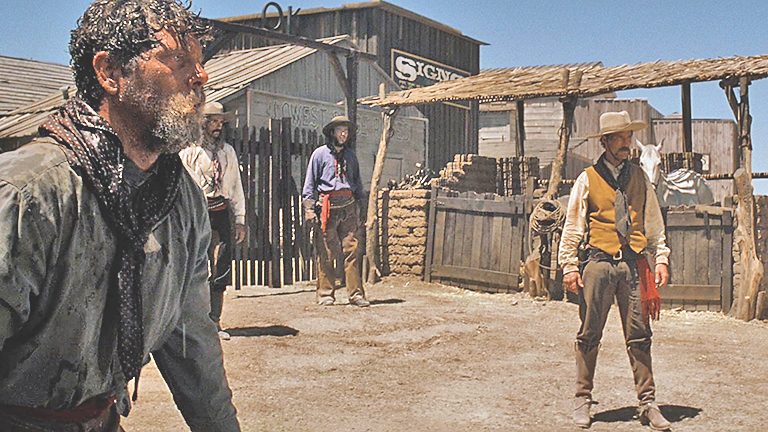
“The Earp/Tombstone saga is about enduring issues that are relevant to a free society. What does the citizenry do when outlawry becomes intolerable? This has been a continuing issue through American history as we try to balance the rights of the accused against protection of society. It is the same question we are asking today as our streets grow increasingly unsafe. If our leaders understood the Earp story, they would not keep making the same mistakes that have been made generation after generation.” —Casey Tefertiller
“It is critical to understand these events in context of our modern era in which politicians and activists—people who know nothing about law enforcement—are trying to ‘reform’ policing. The principal purpose of police work is not to perform social services, though that is an important aspect of the job. The main purpose is to keep our communities safe from predatory criminals, and to give officers the tools they need to protect society. The Earp boys, with their checkered careers as pimps and gamblers, redeemed themselves by breaking the back of the largest outlaw gang of the American frontier.” —John Boessenecker
“It was one of the most interesting feuds in frontier history, with some truly colorful characters, and certainly helps us understand how a conflict could escalate into violence in the pressure-cooker environment of a boomtown like Tombstone. I think the feud also illustrates the conflict between metropolitan and pastoral ideals in frontier times.” —James B. Mills
“In 1881, Tombstone very much represented the conflict of what was left of the Old West resisting having to give way to a new West, the ongoing spread of civilization. The film portrays that tension. Laws were being enacted to curb traditional cowboy behavior, and there was less tolerance in the emerging new West for hellraising and rustling. From a romantic perspective, that’s too bad, but the Old West was becoming old in the eyes of families who were building schools and churches and businesses in Arizona and New Mexico and voted for safety over “shoot -em-ups.” —Tom Clavin, historian
“The story is less important for our understanding of Old West history than it is for our understanding of how we’ve understood Old West history. Popularly understood, it’s an archetypal story. A myth.” —Andrew Patrick Nelson, historian
“Make no mistake. It’s not revenge he’s after. It’s a reckoning.” —Doc Holliday
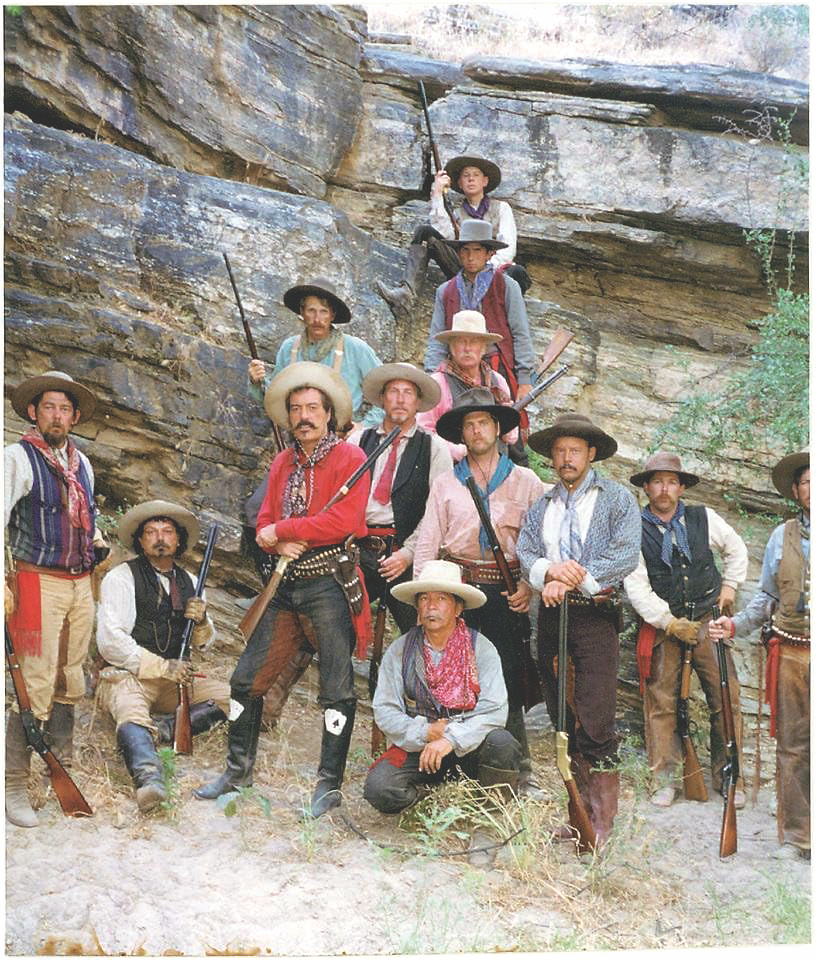
Courtesy Billy Lang
“I’m a woman; I like men.”
When critics and fans discuss elements of the movie Tombstone, one of the major topics is the role of women in the film. In Jarre’s original script—which Russell read and pushed into production—the roles of the Earp and Holliday wives and girlfriends were well developed and potentially had more screen time than in the final release, including the director’s cut. Like many Westerns, the female characters in Tombstone symbolically provide key support to their male counterparts, while also adding sexual tension to the drama.
Despite the classic female Western roles, Tombstone’s women—Allie Earp, Mattie Earp, Louisa Earp, Josephine Marcus and Kate Elder—are based on historical characters. The two characters who play the most pivotal roles in the film and have received the most attention from historians are Dana Delany’s Josephine and Joanna Pacula’s Kate. Because of the growth of the role of women in filmmaking and in leading roles during the past three decades, we decided to put it to our historians and ask them some questions about Josephine, Kate and the women of Tombstone.
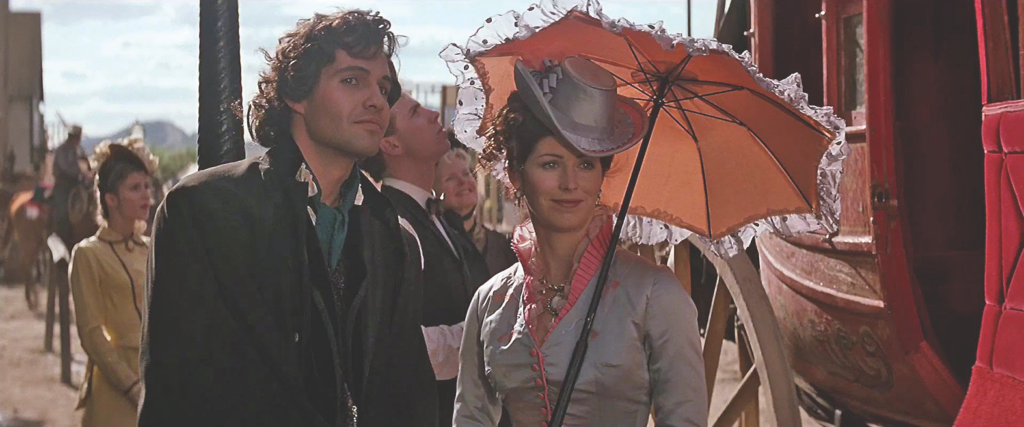
Are the life stories of Josie Earp and Mary Katherine “Big Nose Kate” Elder Horony as important as Wyatt and Doc’s to really understanding Old West history?
“Kate’s life story is certainly more important than Josie’s. Kate had a history with the Earps, and she didn’t care for them and with good reason. That’s routinely left out of the tale of the Earps. It’s significant because Doc Holliday was cemented in the Earp story. Wyatt Earp was the first to call Doc’s lady friend Big Nose Kate. That’s significant too and adds depth to the history of the trio.” —Chris Enss, historian
“I’m not sure that any of the women were interpreted correctly. Allie is correctly portrayed as direct and unabashed in her opinion of Wyatt but otherwise is not examined deeply. Mattie and Josie were not well interpreted. Mattie is stereotyped as an addict rather than explored deeply as a woman who gave the best of her life to Wyatt’s schemes. Josie’s complicated life and her desire to be someone special are unexplored. The Earp/Holliday women led rough lives; many were prostitutes.” —Pam Nowak, author
“We only remember Wyatt because Sarah Josephine Marcus Earp became his posthumous publicist. She was the driving force behind Stuart Lake’s 1931 bestseller Wyatt Earp: Frontier Marshal. She wanted Wyatt presented as Achilles, and Adonis, and Galahad. She threatened lawsuits if Lake delivered anything less. As her dementia deepened, she pleaded, badgered, whined, and raged until Lake protested, ‘Mrs. Earp, you do not desire a biography but a eulogy!’” —Mary Doria Russell
“Again, it would surprise me to learn there’s anything new to say about either of these women. Here’s an idea: how about celebrating the lives of some Western women who aren’t defined by the men in their lives?” —Kirk Ellis
“The lives of Josie Earp and Big Nose Kate Horony are indeed important to understanding the Old West. These women were not just side characters in the lives of famous men, but individuals with their own experiences and struggles. Their stories provide insight into the roles and experiences of women in a predominantly male-oriented historical narrative.” —Mike Bray, co-founder Wolfpack Publishing
“Strong women have and always will have influence with the men in their lives. Back then, women were supposed to be demure, so they were different. Maybe if Wyatt and Doc chose ‘quiet’ women, their lives would have been different, but then again, it seems they were attracted to that type of woman.” —Sherry Monahan, historian
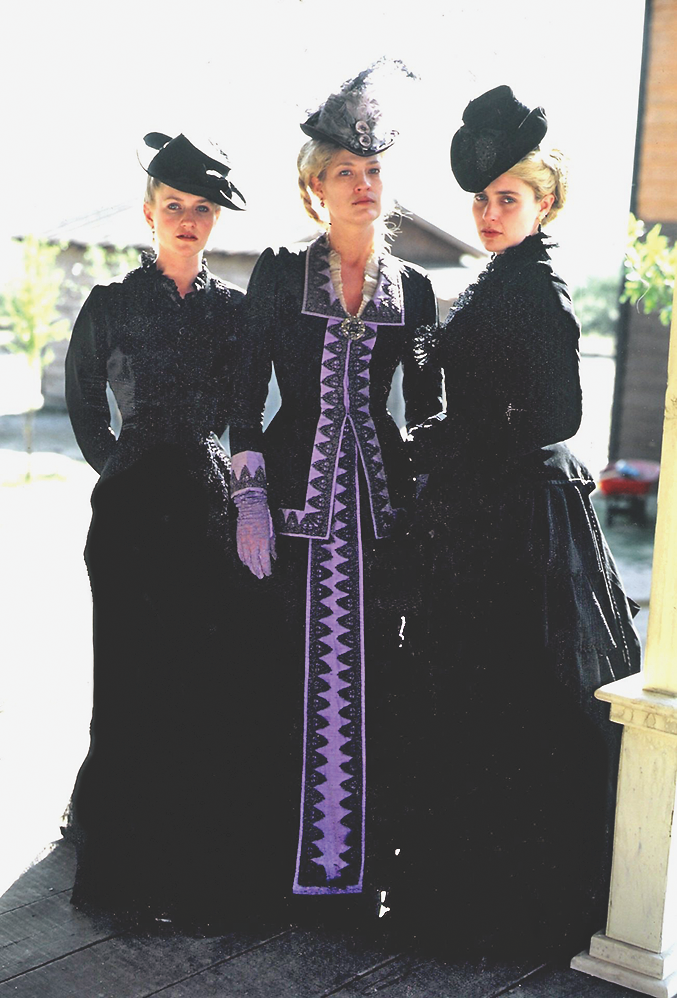
Which Earp women were interpreted correctly in Tombstone, and whose lives need more screen time/written investigation?
“Mattie Blaylock. She was a former soiled dove with issues. Wyatt treated her badly, and actress Dana Wheeler made you feel every moment of her troubles and eventual heartbreak. She didn’t mind looking rough either. I always thought it was interesting how long-suffering Wyatt was with Doc, who had his own addictions, opposed to his lack of tolerance for Mattie in a similar circumstance. Perhaps if Josie hadn’t seized the opportunity to prey on a vulnerable Wyatt, Mattie’s outcome might have been different. But women are so vile to one another.” —Chris Enss
“None of them were really interpreted to the degree they should have been, largely due to the little screen time they received. As mentioned, the ladies were all pushed largely into the background—except Josie, of course, who did not receive an accurate portrayal. Where are the tantalizing tidbits, like Allie and Mattie going out and getting drunk in Tombstone? Where are the intimate conversations that surely occurred when the men came home? How about when Mattie ran out into the yard with her hair in curlers when the shoot-out started? It would be great to see the saga of Tombstone told with all of the characters, not just the men involved.” —Jan MacKell Collins, historian
“I’m a good woman to you Doc. Don’t I always take care of you? Nobody cares for you like me. I’m a good woman.” —Kate Elder
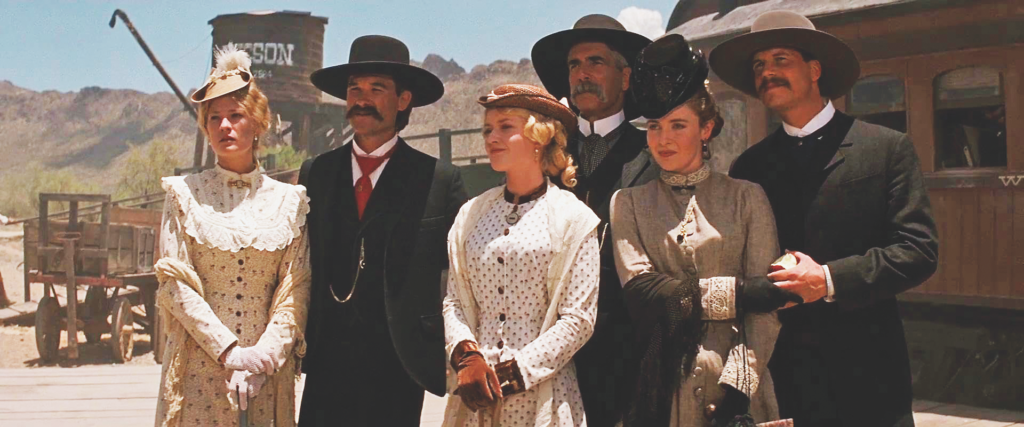
“How the hell did we get ourselves into this?”
“If you’re a fan of the film Tombstone, you probably like its three ‘A’s’: Actors, Action and Authenticity; whether it was the storyline, the dialogue, the wardrobe, or the weapons. Nowadays, everything is green screen and CGI (computer-generated imagery). But in Tombstone, if it’s on the screen, it’s real. From the stunts to the sets. Expansive vistas, majestic mountains, lightning and dust so thick you can taste it.” —John Farkis
“For everyday people, stories and great characters are how we understand the past, and the Tombstone trouble gives us everything we could ever want. Betrayal, bravery, bad guys, violence, romance, familial love, revenge. It’s the frontier as we know it, a great American story with a great American character, Wyatt Earp, in its lead. Flaws aside, he’s the quintessential American hero. We see ourselves in him.” —Leo W. Banks, author and historian
“The look, feel, sound and tone of the movie was a jolt to the genre. It looked and sounded like 1880.” —Allen Barra
“Tombstone will hold its importance in popular culture such as Davy Crockett, Lonesome Dove etc., but I have my doubts about Yellowstone.” —Chuck Parsons, historian
“The movie went to great lengths to use historically accurate hats, guns, costumes, sets and even the language of the day. It, therefore, looks and sounds like a true depiction of life in the 1880s in Arizona Territory.” —Peter Brand, historian
“Contrary to popular opinion, none of the Tombstone town scenes were actually filmed in Tombstone. “ —John Farkis
“I believe the story still has things to teach us if we are willing to go beyond sim plistic stereotypes of good guys and bad guys to an appreciation of the forces at work in shaping America in the final decades of the 19th century. There is still much to learn, and the Earps and their women as well as their adversaries, can help us to understand not only Tombstone but also ourselves.” —Gary Roberts
“No, it’s not the greatest Western. But it is great. The greatest Western would have been Tombstone following the original script that Kevin Jarre wrote. But that wouldn’t be a movie, it would have been a miniseries.” —Allen Barra
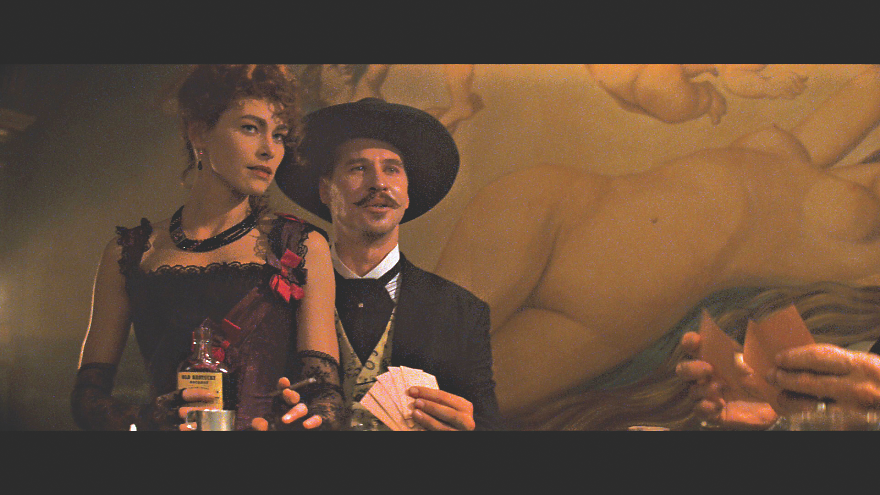
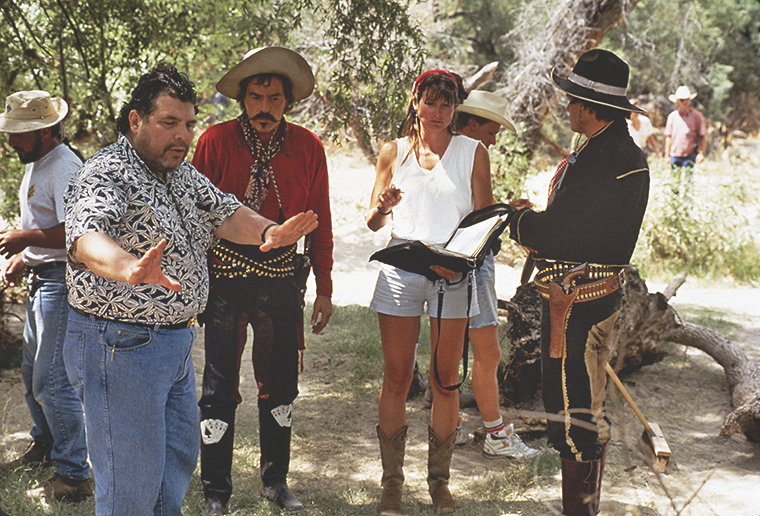
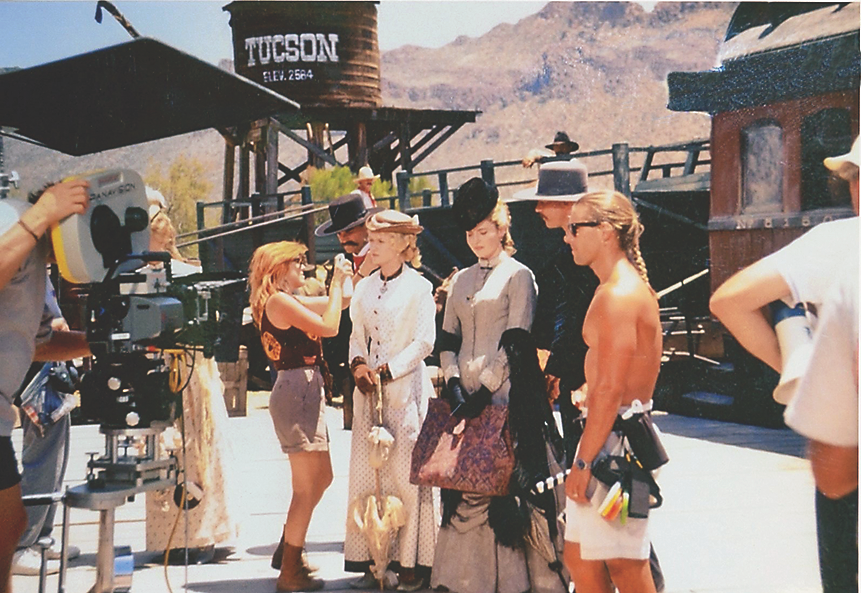
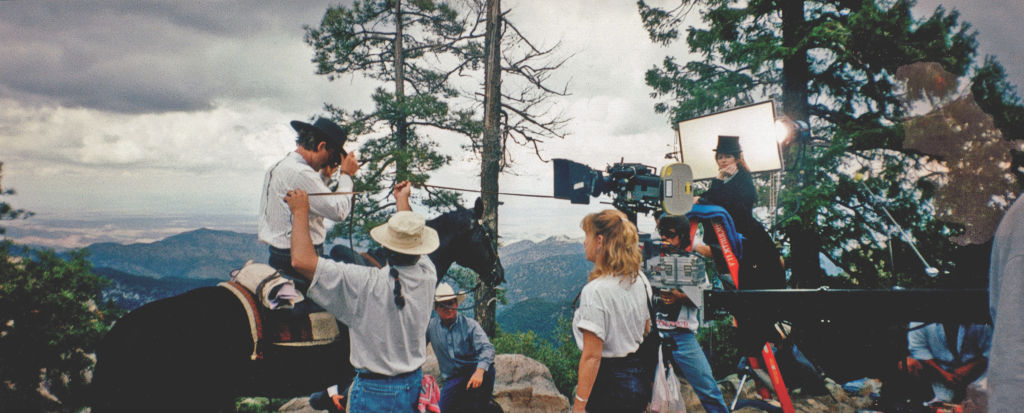
Dusty Cowtowns Meet the Boomtown Ethos
One of the strange trends in Western movie town sets that developed in the latter half of the 20th century is the idea that the towns needed to be old and weather-beaten. But in the case of Tombstone in 1880, it was brand new and booming with new buildings and new construction everywhere. It was a boomtown, for crying out loud. Here’s what the producer said about this:
“Mescal was a dusty, weather-beaten set when we got there. Our script called for a NEW TOWN, bustling, buildings going up. Fresh paint. Businesses working out of tents whilst more permanent structures were going up. So we basically repaired and painted every building. Then, of course, before we were finished, Quick and the Dead came in and started to age the entire set, building by building. Took it from freshly painted to aged Western town. Ironic, no?” —Bob Misiorowski
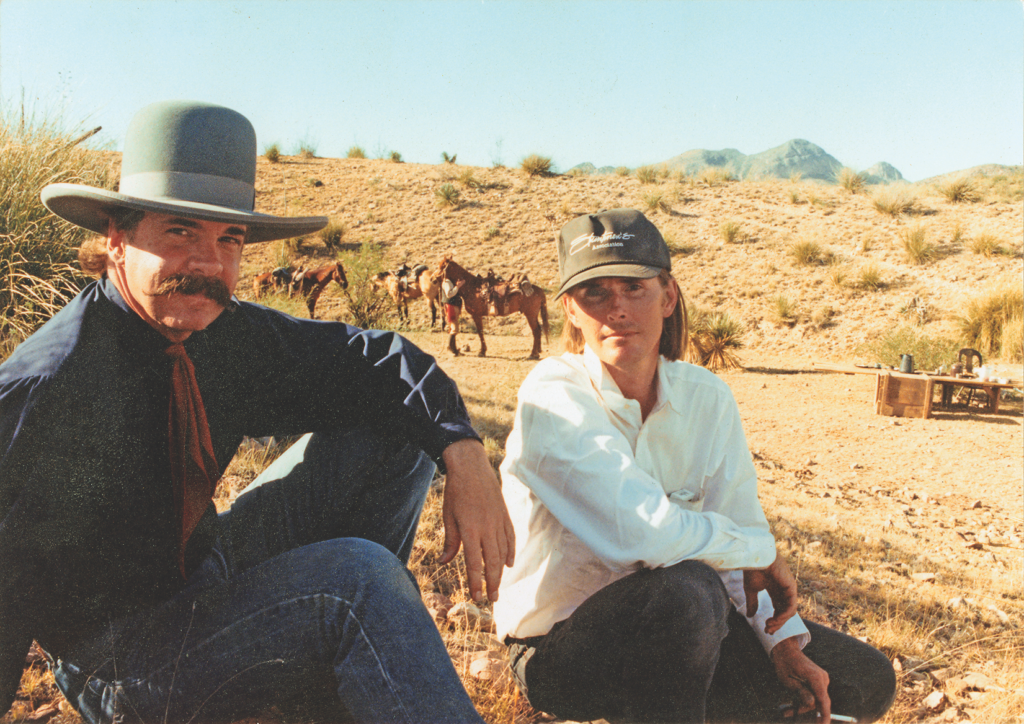
A Screenwriter Actually Listened to a Historian, June 9, 1993
Above is a very prescient photograph of Jeff Morey and Kevin Jarre just before the end. It is significant for two reasons. The first is that screenwriter Kevin Jarre actually listened to someone who loves the real history of Tombstone and Wyatt Earp, and that person was Jeff Morey. The idea that the boomtown was brand new is from Jeff (see below). The concept that the Cowboys should look like land-locked pirates, colorful and not draped in dusty browns, that’s Jeff. The clever lines, that is mostly Kevin being brilliant, but the bad news is, his vision for directing did not fly, and he was fired less than 48 hours after this photo was taken. Out of solidarity with Jarre, Morey had his name taken off the movie credits. We thank them both for their service to our cause. Someday, someone is going to dust off their collaboration and make their brilliant vision whole, said the historian who took the photo.
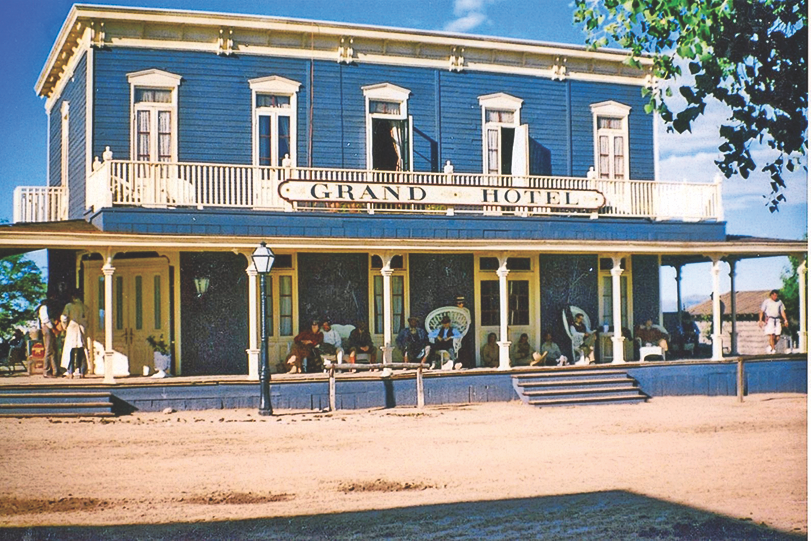
How to Redeem Kevin Jarre’s Masterful Script
This is not a prediction. This is a mandate. The remake of Tombstone will be a limited series of 10 episodes and in the final episodes (or as bookends) it will feature Kurt Russell as an old Wyatt Earp and Dana Delany as his longtime partner, Sadie, trying, in vain, to cash in on his story in the final boomer-outlaw town, Hollywood.
The final word.
“The real Earp was not likable. But he was to be admired.” —Mark Warren
“Suppose. Suppose…” —Wyatt Earp’s final words
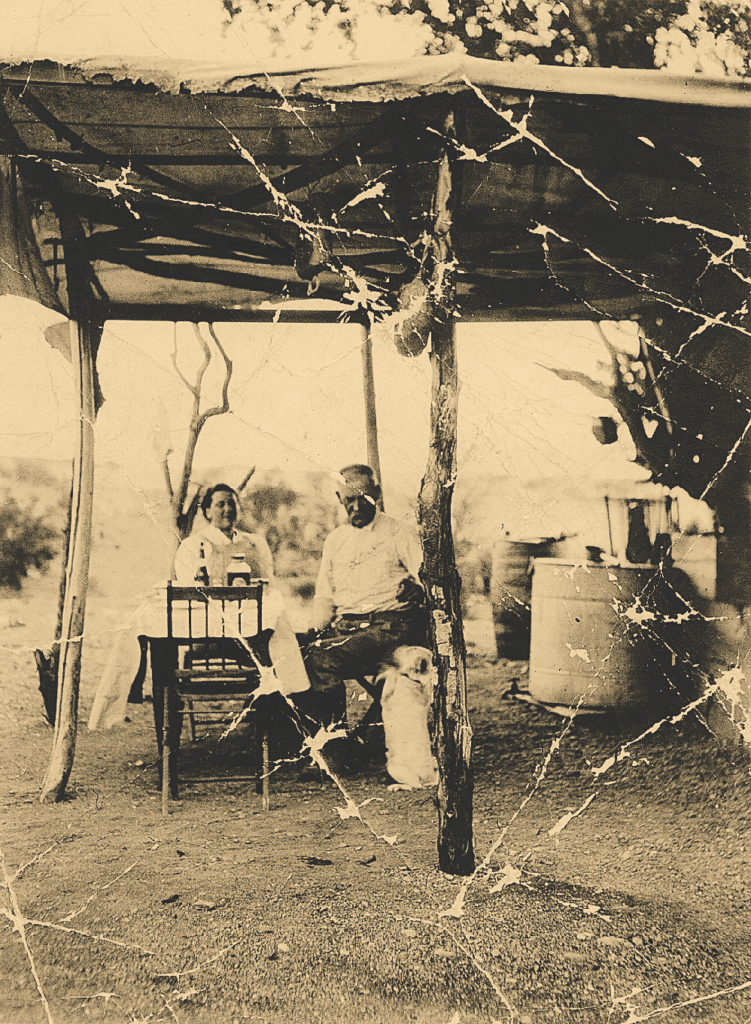
Wyatt and Sadie spent a delightful 22 winters at or near their primitive Happy Days Mine camp between Parker, Arizona, and Vidal, California. (Wyatt spent 28 months in Tombstone.) The dog’s name is Earpie. This is where the series should begin and end. True West Archives
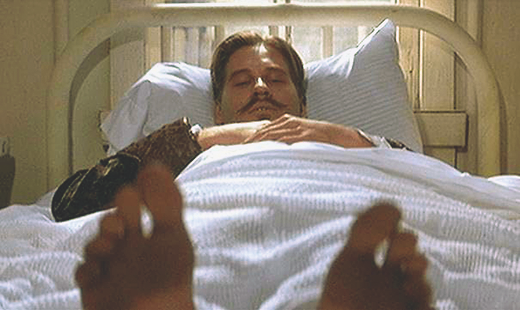
In the end, everything in this world is a joke. That is why Doc Holliday’s alleged last words ring so loud and so true.

